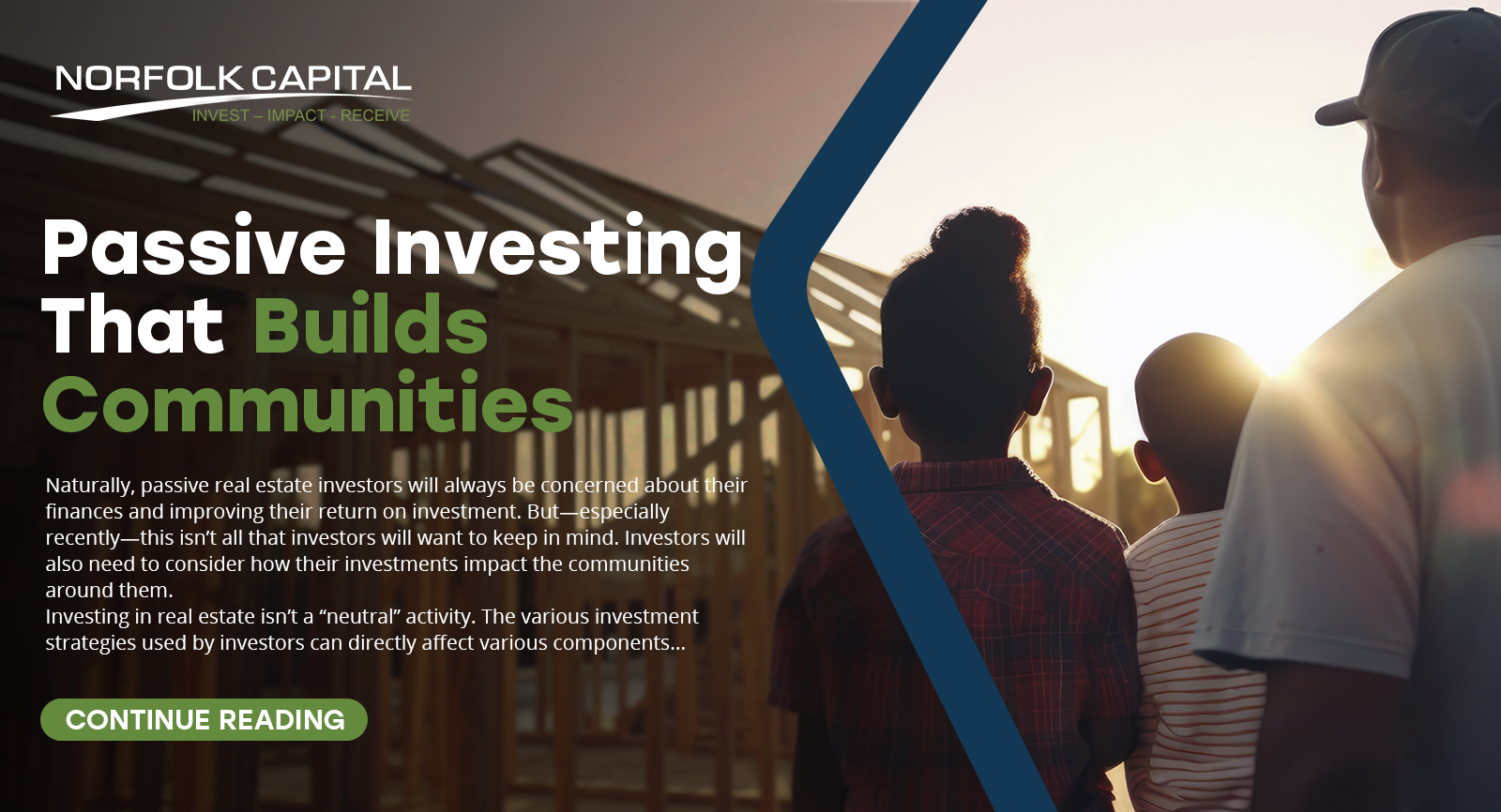
Passive Investing That Builds Communities
Naturally, passive real estate investors will always be concerned about their finances and improving their return on investment. But—especially recently—this isn’t all that investors will want to keep in mind. Investors will also need to consider how their investments impact the communities around them.
Investing in real estate isn’t a “neutral” activity. The various investment strategies used by investors can directly affect various components of a neighborhood, including access to equity, property values, desired property uses, and more.
Norfolk Capital is proud to play a pivotal role in the movement to use private lending for good. When capital is deployed in a way that measurably improves a neighborhood, everyone— not just the investors — can benefit.
So, what does it mean to be a “community builder” in addition to being a capital investor?
It means being willing to dive deeper into projects and look at capital through a more holistic lens. Metrics such as return on investment will still be important, but they won’t be all that matters.
There are countless types of projects that have been completed in the Greater Boston Area that have benefitted both the capital investor and the community alike. For example, especially given the city’s high property values and reliable public transportation, converting a parking lot into multi-family housing is a capital project that benefits the capital holder and also benefits residents living in the neighborhood.
By working cooperatively and considering local needs, private lending can be used to build communities and promote the greater good. Norfolk Capital is committed to supporting the broader community-building movement.
